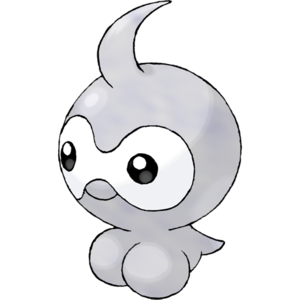On the Origin of Species: Castform
|
Upon liberating the Weather Center in Ruby, Sapphire and Emerald, players would be rewarded with Castform, a Pokémon with an interesting gimmick. Its ability, Forecast, enabled it to change between multiple forms, each form having a different type. Specifically, its changes were affected by the weather, and Castform also came equipped with an array of moves that allowed it to alter the weather, and thus itself.
In terms of appearance... well, Castform is certainly an odd-looking thing. Its design is simple and quite abstract, and as such it usually gets pointed to as evidence that newer Pokémon have less creative designs. But Castform looks the way it does for a reason, albeit for one that might not be immediately apparent to non-Japanese players.
Some elements of the design may have come from clouds: this is especially apparent when Castform changes into one of its weather-determined forms. But the main inspiration comes from the teru teru bozu (てるてる坊主), a strange little charm designed to bring good weather... or alternatively, rain.
The term is somewhat awkward to translate... as the literal translation, shiny shiny Buddhist priest, might suggest. Teru means shiny, and can also refer to good weather. And while bozu literally translates to Buddhist priest, it's more likely a reference to baldness – Buddhist priests being often characterized by their bald heads. Since the charms do indeed resemble a bald-headed figure, this makes a certain amount of sense. In this context, the shininess probably refers to the sunlight reflected by a bald head!
The tradition has its earliest origins in the Heian period (749 – 1185). It was adapted from a Chinese practice which involved putting the teru teru bozu on the end of a broom to sweep good spirits your way. It was Japanese farmers who began the more recognizable practice of hanging the figures, made from cloth or paper tied off with string, inside their houses as a prayer for good weather.
During the Edo period (1603 – 1868), the practice spread to the cities, where it became popular with children. By this time, the figures were hung outside the house to prevent rain. Alternatively, hanging them upside down would supposedly have the opposite effect, and encourage rain. The teru teru bozu remains a common sight in Japan to this day, though nowadays they are usually made of tissue paper and an elastic band.
The teru teru bozu is the subject of a popular Japanese nursery rhyme, which may be sung as the figure is hung up. In it, the teru teru bozu is promised a golden bell and sake if it successfully prevents rain... while the penalty for failure is having its head cut off. No pressure, teru teru bozu.
Intertwined with all of this is what some claim to be the true origin of the practice. A story tells of a monk who promised a village plagued by constant rains that he would bring good weather. When it became apparent that he had failed, the villagers tracked him down and cut off his head. This seems to tie in with the teru teru bozu, but we shouldn't be so hasty to jump to conclusions: most historians think that such stories actually developed after the practice became widespread.
Castform, then, has its origins in a peculiarly Japanese phenomenon that dates back many hundreds of years. And while players might not be inclined to treat it to sake, nor should they be tempted to cut off its head.

